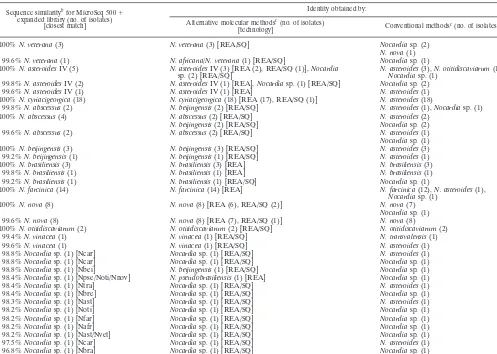Evaluation of Partial 16S Ribosomal DNA Sequencing for Identification of Nocardia Species by Using the MicroSeq 500 System with an Expanded Database
Full text
Figure



Related documents
Index Terms -Autonomous mobile Robot, Image Processing, Neural Network, Matlab programming, Object Detection..
Dissertation uses open source NIDS (Snort) which, takes a packet from network and compares it with the signatures stored in database this process is time
Extracorporeal Membrane Oxygenation (ECMO),cardio Pulmonary Blood Gases (CPB), partial Oxygen (pO 2 ), partial.. Carbon dioxide pressure
Two variates were examined in this study: one consisting of measures of low back function (PRC-DTE, PRC-STE, Box 90 ˚, and FG-TE) and one variate consisting of measures of
There are few literatures about the evaluation of service quality in university campuses, Owlia (1996) [39] es- tablishes the model for the concept of higher education services,
The gathering consensus on the growing importance of small business enterprises(SME`S) in the national economy in the country, whether developed or developing,
There is a ne- cessity for the development of efficient processes because of increasing environmental pollution by polymers (“plastic planet”). Moreover, their recycling may open
A report published in the American Journal of Public Health (Mayer et al., 2008) suggests several reasons for healthcare disparities among lesbian, gay, bisexual, and